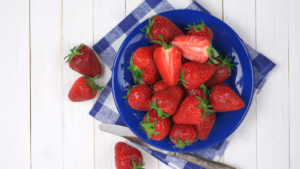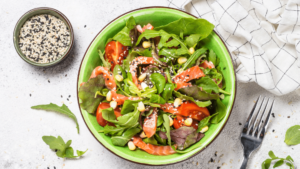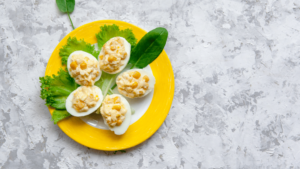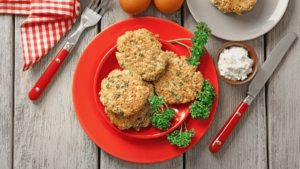The Color of Your Plate: A Surprising Influence on Your Appetite
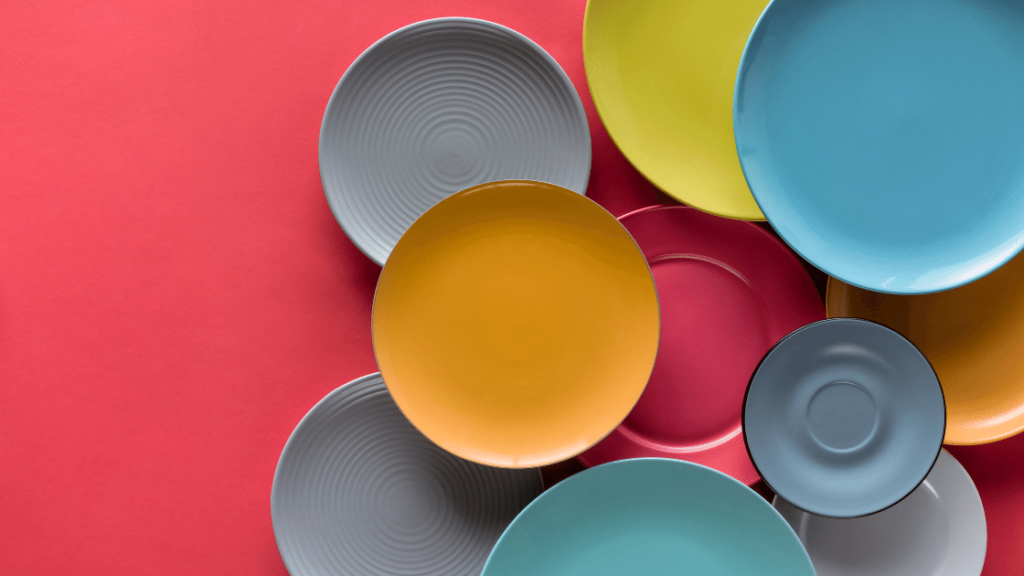
Be honest. Is your food intake more influenced by your appetite or by actual hunger? If you’re like most people, it’s probably appetite.
There’s quite a difference between the two. Hunger is a survival instinct. Appetite is influenced by emotion. You might eat for enjoyment, or perhaps out of boredom. Or maybe you’re using food to mask anxiety or depression. There are plenty of reasons why we all have such differing appetites. Just like there are different ways to suppress or increase your appetite!
To appease your appetite, you’ve probably heard of drinking a large glass of water before each meal or maybe chewing your food thoroughly before swallowing. But have you ever heard of the color of your plate influencing your eating habits? Take a look around the next restaurant you go to. How many shades of red do you see in the decor? Probably lots, especially if it’s a place where the owner wants you in and out of there quickly! (I mean, In-N-Out Burger is literally called In-N-Out. And look at all that red!)
What Does The Color of Your Plate Mean?
I’ve basically given away what red does, and I’ll elaborate on it later! But what can other colors do to your appetite? How about the blues and the greens? Let’s find out!
Blue
Let’s start with the most calming color!
Blue soothes. It’s associated with clear skies, ocean waves, and cool ice packs filled with gel. Looks at the walls, flooring, and art next time you’re in a spa or health clinic. I’m sure you’ll find many shades of blue!
When it comes to eating habits, relaxation can act as an appetite suppressant. If you’re surrounded by hues of blue when it’s time to eat, there’s a good chance you’ll eat more mindfully. All that food on the blue plate pictured above? You likely won’t eat all of it, unless you’re really hungry.
Green
Green is another color that can influence you to eat mindfully, but for a different reason. This earthy color is associated with the environment and good health. That’s why you see so much of it whenever you go to an organic or healthy promoting eatery.
A green plate may influence you to choose healthier portions and more nutritious food. If all your cutlery is green, you’ll be ahead of the game before the food’s even done!
Yellow and Orange
This is where the appetite increasing colors come in. If you’re the type of person who forgets to eat sometimes, maybe you need to paint your walls yellow and orange.
Yellow and orange are colors that evoke happiness and comfort. Though negative emotions can make us want to eat too, cheeriness can increase your appetite too! If you need to gain some weight, improve your appetite with an upbeat approach. See what a yellow plate does for you!
Red
There’s a reason why restaurants tend to have red tablecloths and red walls. Red is a passionate color. It’s a warning color, raising blood pressure and heart rate when our eyes see too much of it. It not only increases your hunger, but it also causes more ravenous eating.
I’m not trying to knock red too badly though. There is at least one group of people who benefit greatly from the sight of a red plate: dementia patients. Oftentimes, a person living with dementia can’t recognize hunger cues. But if you pack up their food in red containers or on red plates, they may be more encouraged to eat what’s in front of them.
Things to Consider
The studies have been done, but that doesn’t mean we’re all affected exactly the same way by the color of your plate or color in general. It’s definitely worth a try though! It’s something to think about next time you want to paint, remodel, or buy new stuff for the home!

Katrina Jenkins
Author, Licensed Massage Therapist
Katrina Jenkins graduated from Towson University in 2013 with a Bachelor’s Degree in Health Science and worked as a nurse’s aide briefly before pursuing her true passion. She graduated from the Massage Therapy Institute of Colorado in April 2016 with honors and completed the Touch of Healers Scholarship Program the following summer. She has been a part of the Moyer Total Wellness Team since the summer of 2017.
Resources:
Schwab, Jeremy. “Red Plates for Eating with Dementia.” Alzheimer’s & Dementia Weekly, 28 Feb. 2020, www.alzheimersweekly.com/2014/08/red-plates-for-eating-with-dementia.html.
Akyol, Asli, et al. “Impact of Three Different Plate Colours on Short-Term Satiety and Energy Intake: a Randomized Controlled Trial.” Nutrition Journal, BioMed Central, 21 Apr. 2018, www.ncbi.nlm.nih.gov/pmc/articles/PMC5911375/.
Hartel , Kari. “How Colors Can Change Your Appetite and Eating Habits / Nutrition.” FitDay, www.fitday.com/fitness-articles/nutrition/how-color-can-change-your-appetite-and-eating-habits.html.
Photo Credit:
Canva by LightFieldStudios from Getty Images Pro
Canva by Svetl by Getty Images
Canva by Yolya from Getty Images Pro
Canva by Yolya from Getty Images Pro
Canva by pixelshot

